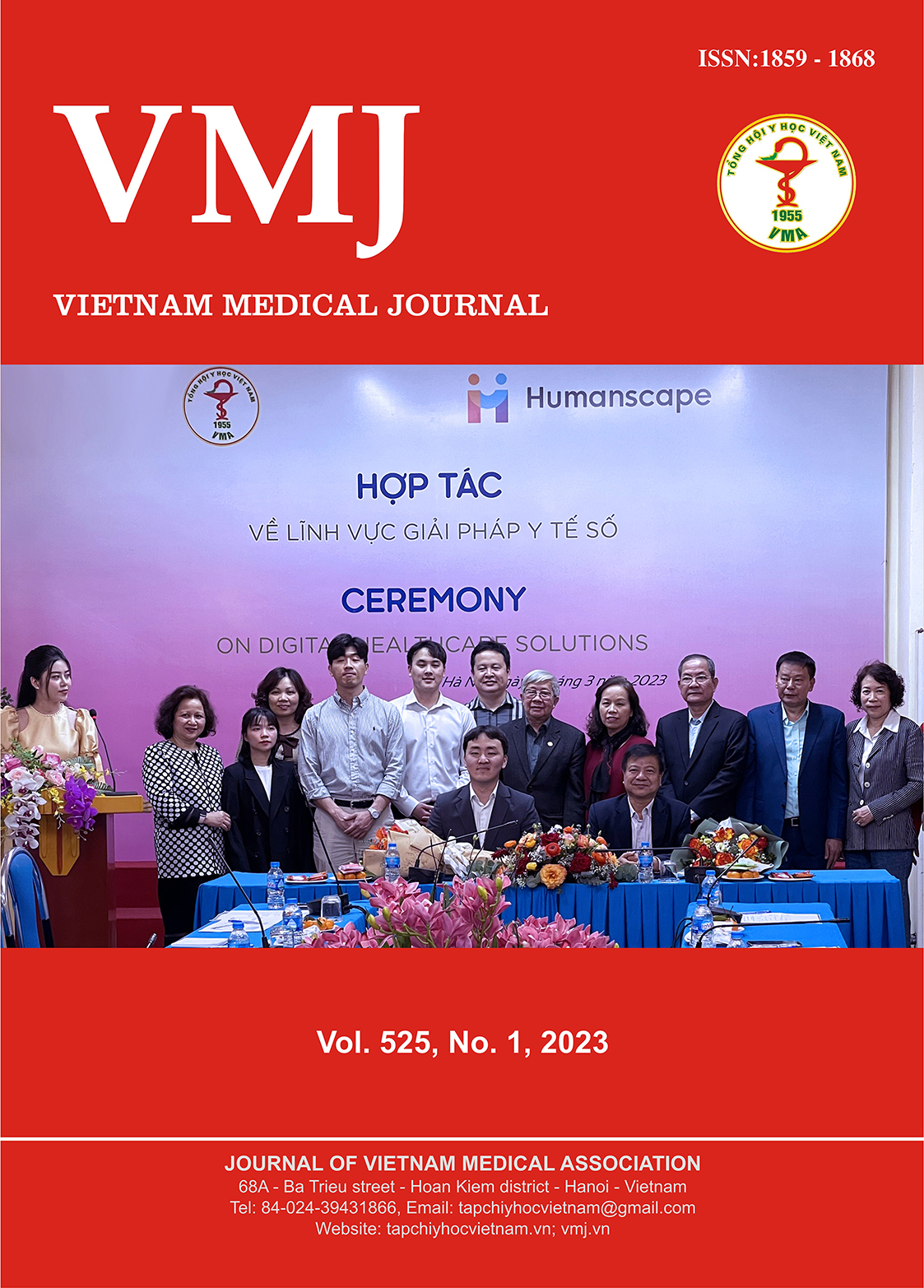COMMON CHARACTERISTICS OF PATIENTS TREATED WITH OZONE THERAPY THROUGH THE SKIN UNDER THE GUIDANCE OF CT SCAN FOR LUMBAR DISC HERNIATION TREATMENT
Nội dung chính của bài viết
Tóm tắt
Objectives: To describe the common characteristics of patients undergoing intervention for lumbar disc herniation treatment using ozone therapy through the skin under the guidance of CT scan, to serve as a basis for intervention studies. Methods: The study describes the common characteristics and assesses pain scores of 147 patients with lumbar disc herniation (100 patients in the intervention group and 47 patients in the control group). Results: Lumbar disc herniation typically occurs in individuals over 30 years of age, with the majority being between the ages of >50 (49.7%) and 30-50 (44.2%). The average age of the study group was 48.8 ± 12.1, lower than the control group (57.4 ± 14.8), (p<0.05). Females had a higher incidence of lumbar disc herniation than males (1.5 times), but p>0.05. Unilateral pain was predominant in both groups, mostly on the left side. The average VAS score before intervention in the study group was 8.0 ± 0.7, with no significant difference between the groups. Patients with pain symptoms before treatment had a high and severe level of pain, with no significant difference between the two groups. The average ODI score indicating functional disability of the study group was 70.3±9, p>0.05. Conclusion: The study provides important information on the common characteristics of patients with lumbar disc herniation and pain symptoms. These results serve as a basis for implementing intervention treatment for patients with lumbar disc herniation.
Chi tiết bài viết
Từ khóa
Lumbar disc herniation; Electromagnetic; CT scan; pain score; Oswestry Disability Index; Interventional therapy
Tài liệu tham khảo
2. Dagenais S, Caro J, Haldeman S. (2008). A systematic review of low back pain cost of illness studies in the United States and internationally. Spine J. Jan-Feb 2008;8(1):8-20. doi:S1529-9430(07)00898-4 [pii] 10.1016/j. spinee. 2007.10.005
3. Hoy D, Brooks P, Blyth F, Buchbinder R. (2010). The Epidemiology of low back pain. Best Pract Res Clin Rheumatol. Dec 2010;24(6):769-81. doi:10.1016/j.berh.2010.10.002
4. Nguyen VC. (2015). Nghiên cứu tác dụng điều trị thoát vị đĩa đệm cột sống thắt lưng của phương pháp tiêm ngoài màng cứng kỹ thuật hai kim. Tạp chí y - dược học quân sự. 2015 2015;(2):49-57.
5. Elvis AM, Ekta JS. (2011). Ozone therapy: A clinical review. J Nat Sci Biol Med. Jan 2011;2(1):66-70. doi:10.4103/0976-9668.82319JNSBM-2-66 [pii]
6. Andreula CF, Simonetti L, De Santis F, Agati R, Ricci R, Leonardi M. (2003). Minimally invasive oxygen-ozone therapy for lumbar disk herniation. AJNR Am J Neuroradiol. May 2003;24(5):996-1000.
7. Lương HH. (2001). Đau thắt lưng và thoát vị đĩa đệm Nhà xuất bản Y học; 2001.
8. Abdi S, Datta S, Trescot AM, et al. (2007). Epidural steroids in the management of chronic spinal pain: a systematic review. Pain Physician. Jan 2007;10(1):185-212.
9. Hashemi M, Poorfarokh M, Mohajerani SA, et al. (2014). Injection of intradiscal o2-o3 to reduce pain and disability of patients with low back pain due to prolapsed lumbar disk. Anesth Pain Med. Dec 2014;4(5):e19206. doi:10.5812/aapm.19206
10. Hidalgo-Tallon FJ, Torres-Morera LM, Baeza-Noci J, Carrillo-Izquierdo MD, Pinto-Bonilla R. (2022). Updated Review on Ozone Therapy in Pain Medicine. Front Physiol. 2022;13:840623. doi:10.3389/fphys.2022.840623


